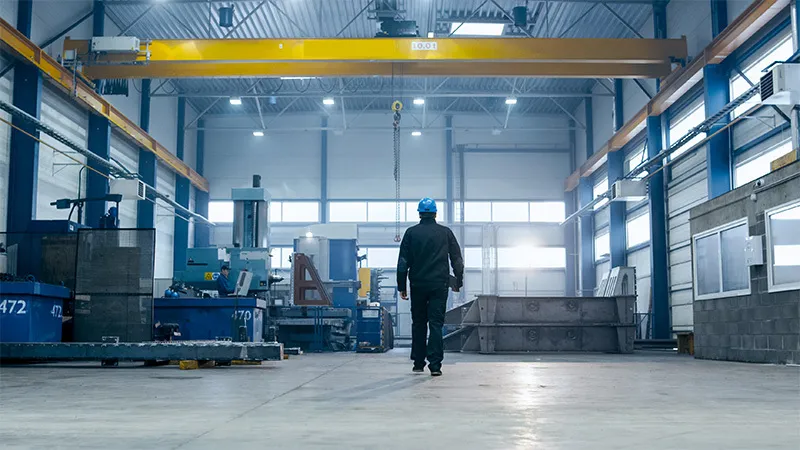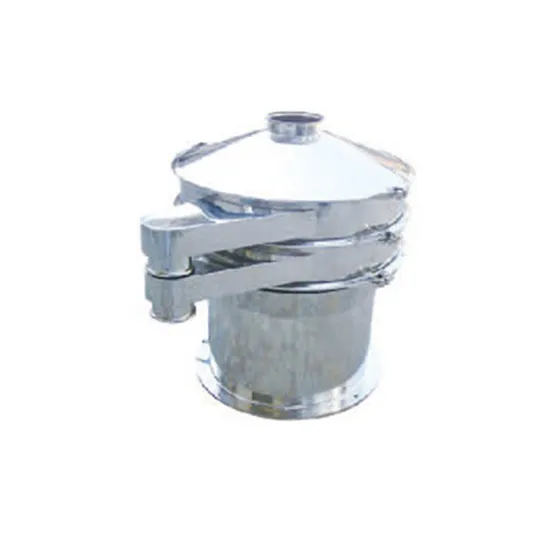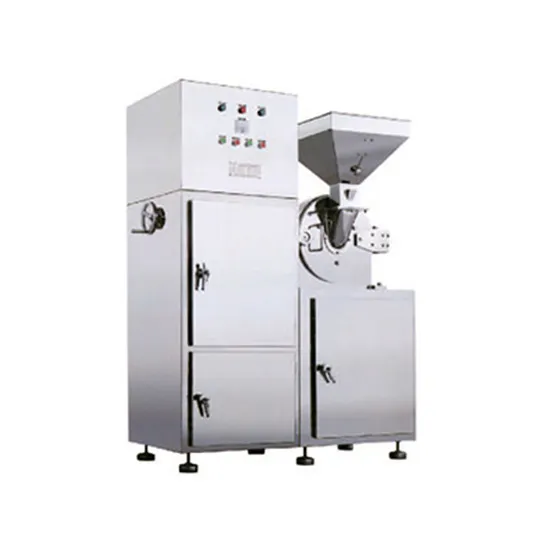NEWS
The Ultimate Guide to Mixing Machines: Everything You Need to Know
Sep 23,2023
Table of Contents
1. Introduction to Mixing Machines
2. Types of Mixing Machines
2.1 Stand Mixers
2.2 Hand Mixers
2.3 Immersion Blenders
2.4 Food Processors
2.5 Countertop Blenders
2.6 High-Speed Blenders
2.7 Planetary Mixers
2.8 Spiral Mixers
3. Key Features to Consider
3.1 Motor Power
3.2 Mixing Speeds
3.3 Bowl Capacity
3.4 Attachments and Accessories
3.5 Durability and Build Quality
4. Applications of Mixing Machines
4.1 Baking and Pastry Making
4.2 Cooking and Food Preparation
4.3 Beverage Mixing
4.4 Industrial Mixing
5. Choosing the Right Mixing Machine for Your Needs
6. Maintenance and Care Tips
7. Frequently Asked Questions (FAQs)
7.1 What is the difference between a stand mixer and a hand mixer?
7.2 Can I use a stand mixer for kneading dough?
7.3 How do I clean and maintain my mixing machine?
7.4 Are there any safety precautions to consider while using a mixing machine?
7.5 Can I use a stand mixer for other purposes besides baking?
8. Conclusion
Mixing machines are versatile appliances that play a crucial role in various industries and households. These machines simplify the process of mixing ingredients for cooking, baking, and beyond. With their powerful motors, different speed settings, and a range of attachments, mixing machines can handle a wide array of tasks efficiently and effortlessly.
2.1 Stand Mixers
Stand mixers are countertop appliances equipped with a powerful motor and a mixing bowl attached to a stand. They are perfect for heavy-duty mixing tasks such as kneading dough, whipping cream, and beating egg whites. Stand mixers offer stability, hands-free operation, and the ability to mix large quantities of ingredients.
2.2 Hand Mixers
Hand mixers are handheld appliances that provide flexibility and portability. They are great for light to medium mixing tasks and offer convenience, especially for quick recipes. Hand mixers are easy to store and operate, making them a popular choice for those with limited space or occasional use.
2.3 Immersion Blenders
Immersion blenders, also known as hand blenders or stick blenders, are handheld devices designed for blending, pureeing, and emulsifying liquids or soft ingredients directly in the container. They are ideal for making soups, sauces, and smoothies, offering convenience and ease of use.
2.4 Food Processors
Food processors are versatile kitchen appliances that can handle a variety of tasks, including chopping, shredding, slicing, and mixing. They come with different attachments and blades, allowing you to perform multiple functions with a single machine. Food processors are great for preparing ingredients for recipes that require precise cutting or blending.
2.5 Countertop Blenders
Countertop blenders are powerful machines designed to blend and mix ingredients for smoothies, shakes, sauces, and more. They come with a pitcher or jar and are capable of crushing ice and blending tough ingredients. Countertop blenders offer different speed settings and are perfect for creating smooth textures and consistent results.
2.6 High-Speed Blenders
High-speed blenders are advanced blending machines that go beyond regular countertop blenders. They have powerful motors and sharp blades capable of pulverizing tough ingredients, including fibrous fruits and vegetables. High-speed blenders are popular among health enthusiasts for making smoothies, nut butters, and even hot soups.
2.7 Planetary Mixers
Planetary mixers are professional-grade machines commonly used in bakeries and commercial kitchens. They feature a unique mixing mechanism where the mixing attachment moves around the bowl while rotating on its axis. This motion enables thorough and consistent mixing, making planetary mixers ideal for heavy-duty baking tasks.
2.8 Spiral Mixers
Spiral mixers are specialized machines specifically designed for kneading dough. They utilize a spiral-shaped mixing hook that mimics hand kneading motions, ensuring proper gluten development and dough consistency. Spiral mixers are commonly used in bakeries and pizza shops for making bread, pizza dough, and other dough-based products.
When choosing a mixing machine, several key features should be taken into consideration:
3.1 Motor Power
The motor power determines the machine's ability to handle heavy mixing tasks. Higher wattage or horsepower indicates more power and better performance. Consider your specific needs and the types of recipes you'll be making to determine the appropriate motor power for your mixing machine.
3.2 Mixing Speeds
Having multiple speed settings allows you to adjust the mixing intensity according to your recipe requirements. Look for machines with a good range of speed options to have more control over the mixing process.
3.3 Bowl Capacity
The bowl capacity determines the amount of ingredients you can mix at once. Consider the size of your recipes and the quantities you typically work with to choose a mixing machine that suits your needs.
3.4 Attachments and Accessories
Attachments and accessories expand the versatility of your mixing machine. Look for machines that come with a variety of attachments such as dough hooks, wire whisks, and paddle beaters, as they allow you to perform different mixing tasks with ease.
3.5 Durability and Build Quality
Investing in a durable and well-built mixing machine ensures longevity and reliable performance. Look for machines made from high-quality materials that can withstand regular use and provide consistent results over time.
4.1 Baking and Pastry Making
Mixing machines are indispensable tools in the world of baking and pastry making. Whether it's mixing cake batters, kneading dough for bread, or whipping cream for desserts, these machines make the process faster, more efficient, and consistent.
4.2 Cooking and Food Preparation
Mixing machines find their place in everyday cooking and 香蕉传媒 preparation tasks. From mixing sauces and dressings to blending soups and pureeing ingredients, these machines simplify the process and save valuable time in the kitchen.
4.3 Beverage Mixing
Whether you're making smoothies, milkshakes, or cocktails, mixing machines are essential for creating perfectly blended beverages. Their powerful motors and blades ensure smooth textures and consistent results.
4.4 Industrial Mixing
In industrial settings, mixing machines are used for large-scale mixing and blending operations. Industries such as pharmaceuticals, chemicals, and cosmetics rely on mixing machines for producing consistent and high-quality products.
When selecting a mixing machine, consider your specific requirements, budget, and the types of recipes you'll be preparing. Assess the features, functionalities, and attachments that align with your needs. Read product reviews and compare different brands and models to make an informed decision.
To ensure the longevity and optimal performance of your mixing machine, follow these maintenance and care tips:
- Regularly clean the machine and its attachments according to the manufacturer's instructions.
- Avoid immersing the motor or electrical components in water.
- Store the machine in a clean and dry place.
- Handle attachments with care to prevent damage or breakage.
- Check and tighten any loose screws or parts periodically.
- If any issues arise, refer to the user manual or contact the manufacturer for assistance.
7.1 What is the difference between a stand mixer and a hand mixer?
Stand mixers are larger, heavier, and more powerful than hand mixers. They offer stability and hands-free operation, making them suitable for heavy-duty mixing tasks. Hand mixers, on the other hand, are smaller, lighter, and more portable. They are ideal for light to medium mixing tasks and offer convenience for quick recipes.
7.2 Can I use a stand mixer for kneading dough?
Yes, stand mixers are excellent for kneading dough. They have powerful motors and sturdy attachments, such as dough hooks, designed specifically for this purpose. Stand mixers ensure thorough kneading and proper gluten development, saving you time and effort compared to hand kneading.
7.3 How do I clean and maintain my mixing machine?
To clean your mixing machine, detach the attachments and wash them in warm, soapy water. Wipe the machine's body with a damp cloth, making sure not to immerse the motor or electrical components in water. Refer to the manufacturer's instructions for specific cleaning guidelines. Regular maintenance includes checking for loose parts, cleaning any 香蕉传媒 debris, and storing the machine properly.
7.4 Are there any safety precautions to consider while using a mixing machine?
While using a mixing machine, always ensure it is properly assembled and securely locked before starting. Avoid placing your fingers or utensils near moving parts during operation. If the machine starts making abnormal noises or vibrations, turn it off and check for any issues. Keep children and pets away from the machine while in use.
7.5 Can I use a stand mixer for other purposes besides baking?
Yes, stand mixers have various attachments available, allowing you to perform multiple tasks. Besides baking, stand mixers can be used for making pasta, grinding meat, slicing vegetables, and more. Refer to the manufacturer's instructions for compatibility and safety guidelines when using attachments for different purposes.
Mixing machines are valuable tools that simplify the mixing process, whether for baking, cooking, or industrial applications. Understanding the different types of mixing machines, their features, and applications will help you make an informed decision when selecting the right one for your needs. Remember to consider motor power, mixing speeds, bowl capacity, attachments, and build quality while keeping your specific requirements in mind. With proper maintenance and care, your mixing machine will serve you well, providing efficiency and convenience in your culinary adventures.
1. Introduction to Mixing Machines
2. Types of Mixing Machines
2.1 Stand Mixers
2.2 Hand Mixers
2.3 Immersion Blenders
2.4 Food Processors
2.5 Countertop Blenders
2.6 High-Speed Blenders
2.7 Planetary Mixers
2.8 Spiral Mixers
3. Key Features to Consider
3.1 Motor Power
3.2 Mixing Speeds
3.3 Bowl Capacity
3.4 Attachments and Accessories
3.5 Durability and Build Quality
4. Applications of Mixing Machines
4.1 Baking and Pastry Making
4.2 Cooking and Food Preparation
4.3 Beverage Mixing
4.4 Industrial Mixing
5. Choosing the Right Mixing Machine for Your Needs
6. Maintenance and Care Tips
7. Frequently Asked Questions (FAQs)
7.1 What is the difference between a stand mixer and a hand mixer?
7.2 Can I use a stand mixer for kneading dough?
7.3 How do I clean and maintain my mixing machine?
7.4 Are there any safety precautions to consider while using a mixing machine?
7.5 Can I use a stand mixer for other purposes besides baking?
8. Conclusion
Mixing machines are versatile appliances that play a crucial role in various industries and households. These machines simplify the process of mixing ingredients for cooking, baking, and beyond. With their powerful motors, different speed settings, and a range of attachments, mixing machines can handle a wide array of tasks efficiently and effortlessly.
2.1 Stand Mixers
Stand mixers are countertop appliances equipped with a powerful motor and a mixing bowl attached to a stand. They are perfect for heavy-duty mixing tasks such as kneading dough, whipping cream, and beating egg whites. Stand mixers offer stability, hands-free operation, and the ability to mix large quantities of ingredients.
2.2 Hand Mixers
Hand mixers are handheld appliances that provide flexibility and portability. They are great for light to medium mixing tasks and offer convenience, especially for quick recipes. Hand mixers are easy to store and operate, making them a popular choice for those with limited space or occasional use.
2.3 Immersion Blenders
Immersion blenders, also known as hand blenders or stick blenders, are handheld devices designed for blending, pureeing, and emulsifying liquids or soft ingredients directly in the container. They are ideal for making soups, sauces, and smoothies, offering convenience and ease of use.
2.4 Food Processors
Food processors are versatile kitchen appliances that can handle a variety of tasks, including chopping, shredding, slicing, and mixing. They come with different attachments and blades, allowing you to perform multiple functions with a single machine. Food processors are great for preparing ingredients for recipes that require precise cutting or blending.
2.5 Countertop Blenders
Countertop blenders are powerful machines designed to blend and mix ingredients for smoothies, shakes, sauces, and more. They come with a pitcher or jar and are capable of crushing ice and blending tough ingredients. Countertop blenders offer different speed settings and are perfect for creating smooth textures and consistent results.
2.6 High-Speed Blenders
High-speed blenders are advanced blending machines that go beyond regular countertop blenders. They have powerful motors and sharp blades capable of pulverizing tough ingredients, including fibrous fruits and vegetables. High-speed blenders are popular among health enthusiasts for making smoothies, nut butters, and even hot soups.
2.7 Planetary Mixers
Planetary mixers are professional-grade machines commonly used in bakeries and commercial kitchens. They feature a unique mixing mechanism where the mixing attachment moves around the bowl while rotating on its axis. This motion enables thorough and consistent mixing, making planetary mixers ideal for heavy-duty baking tasks.
2.8 Spiral Mixers
Spiral mixers are specialized machines specifically designed for kneading dough. They utilize a spiral-shaped mixing hook that mimics hand kneading motions, ensuring proper gluten development and dough consistency. Spiral mixers are commonly used in bakeries and pizza shops for making bread, pizza dough, and other dough-based products.
When choosing a mixing machine, several key features should be taken into consideration:
3.1 Motor Power
The motor power determines the machine's ability to handle heavy mixing tasks. Higher wattage or horsepower indicates more power and better performance. Consider your specific needs and the types of recipes you'll be making to determine the appropriate motor power for your mixing machine.
3.2 Mixing Speeds
Having multiple speed settings allows you to adjust the mixing intensity according to your recipe requirements. Look for machines with a good range of speed options to have more control over the mixing process.
3.3 Bowl Capacity
The bowl capacity determines the amount of ingredients you can mix at once. Consider the size of your recipes and the quantities you typically work with to choose a mixing machine that suits your needs.
3.4 Attachments and Accessories
Attachments and accessories expand the versatility of your mixing machine. Look for machines that come with a variety of attachments such as dough hooks, wire whisks, and paddle beaters, as they allow you to perform different mixing tasks with ease.
3.5 Durability and Build Quality
Investing in a durable and well-built mixing machine ensures longevity and reliable performance. Look for machines made from high-quality materials that can withstand regular use and provide consistent results over time.
4.1 Baking and Pastry Making
Mixing machines are indispensable tools in the world of baking and pastry making. Whether it's mixing cake batters, kneading dough for bread, or whipping cream for desserts, these machines make the process faster, more efficient, and consistent.
4.2 Cooking and Food Preparation
Mixing machines find their place in everyday cooking and 香蕉传媒 preparation tasks. From mixing sauces and dressings to blending soups and pureeing ingredients, these machines simplify the process and save valuable time in the kitchen.
4.3 Beverage Mixing
Whether you're making smoothies, milkshakes, or cocktails, mixing machines are essential for creating perfectly blended beverages. Their powerful motors and blades ensure smooth textures and consistent results.
4.4 Industrial Mixing
In industrial settings, mixing machines are used for large-scale mixing and blending operations. Industries such as pharmaceuticals, chemicals, and cosmetics rely on mixing machines for producing consistent and high-quality products.
When selecting a mixing machine, consider your specific requirements, budget, and the types of recipes you'll be preparing. Assess the features, functionalities, and attachments that align with your needs. Read product reviews and compare different brands and models to make an informed decision.
To ensure the longevity and optimal performance of your mixing machine, follow these maintenance and care tips:
- Regularly clean the machine and its attachments according to the manufacturer's instructions.
- Avoid immersing the motor or electrical components in water.
- Store the machine in a clean and dry place.
- Handle attachments with care to prevent damage or breakage.
- Check and tighten any loose screws or parts periodically.
- If any issues arise, refer to the user manual or contact the manufacturer for assistance.
7.1 What is the difference between a stand mixer and a hand mixer?
Stand mixers are larger, heavier, and more powerful than hand mixers. They offer stability and hands-free operation, making them suitable for heavy-duty mixing tasks. Hand mixers, on the other hand, are smaller, lighter, and more portable. They are ideal for light to medium mixing tasks and offer convenience for quick recipes.
7.2 Can I use a stand mixer for kneading dough?
Yes, stand mixers are excellent for kneading dough. They have powerful motors and sturdy attachments, such as dough hooks, designed specifically for this purpose. Stand mixers ensure thorough kneading and proper gluten development, saving you time and effort compared to hand kneading.
7.3 How do I clean and maintain my mixing machine?
To clean your mixing machine, detach the attachments and wash them in warm, soapy water. Wipe the machine's body with a damp cloth, making sure not to immerse the motor or electrical components in water. Refer to the manufacturer's instructions for specific cleaning guidelines. Regular maintenance includes checking for loose parts, cleaning any 香蕉传媒 debris, and storing the machine properly.
7.4 Are there any safety precautions to consider while using a mixing machine?
While using a mixing machine, always ensure it is properly assembled and securely locked before starting. Avoid placing your fingers or utensils near moving parts during operation. If the machine starts making abnormal noises or vibrations, turn it off and check for any issues. Keep children and pets away from the machine while in use.
7.5 Can I use a stand mixer for other purposes besides baking?
Yes, stand mixers have various attachments available, allowing you to perform multiple tasks. Besides baking, stand mixers can be used for making pasta, grinding meat, slicing vegetables, and more. Refer to the manufacturer's instructions for compatibility and safety guidelines when using attachments for different purposes.
Mixing machines are valuable tools that simplify the mixing process, whether for baking, cooking, or industrial applications. Understanding the different types of mixing machines, their features, and applications will help you make an informed decision when selecting the right one for your needs. Remember to consider motor power, mixing speeds, bowl capacity, attachments, and build quality while keeping your specific requirements in mind. With proper maintenance and care, your mixing machine will serve you well, providing efficiency and convenience in your culinary adventures.
More News









